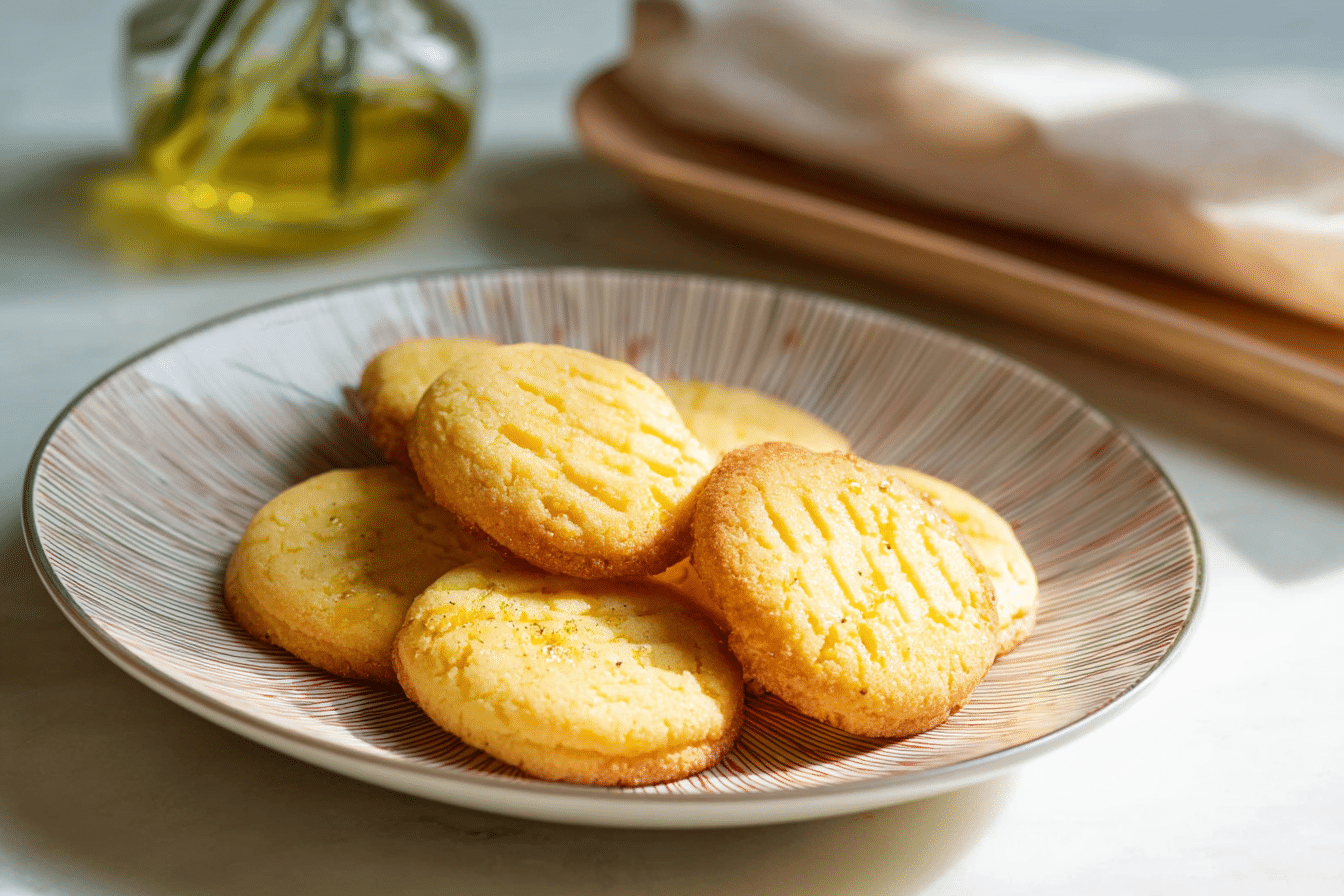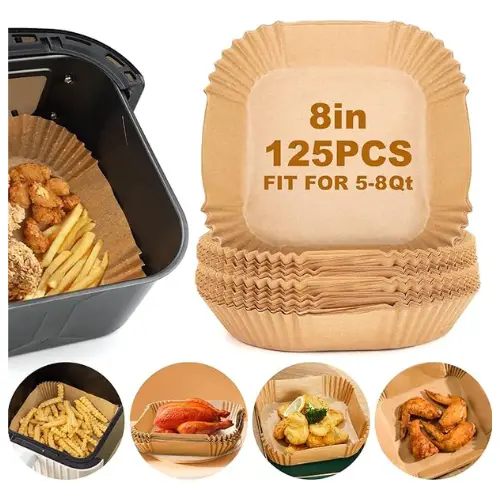French Butter Cookies are more than just a sweet indulgence; they’re a comforting reminder of warmth, tradition, and the simple joy of baking something from scratch. For us, they’re the very heart of our baking journey. On our About page, we’ve shared how it all began in a cozy family kitchen, where the scent of freshly baked cookies filled the air long before the timer rang. The first batch wasn’t perfect — a little too crisp on the edges and slightly pale in the center — but that’s exactly where the magic started. Those early moments of mixing butter, sugar, and flour taught us that great baking is a blend of patience, curiosity, and love.
Disclosure: This post contains affiliate links.If you click and make a purchase, I may earn a small commission at no extra cost to you.
Our passion for French Butter Cookies grew from that humble beginning. We were fascinated by how just a handful of ingredients could create something so delicate yet rich. Over time, we experimented, learned from mistakes, and collected little baking secrets that made all the difference — from the type of butter to the texture of the dough. Each recipe tweak was like a new chapter in our story, and every successful batch became a reason to share the joy with others.
Today, these cookies aren’t just a recipe to us; they’re a tradition worth passing on. Whether you’re making them for a festive gathering, a quiet afternoon tea, or simply because you crave that unmistakable buttery crumb, our version of French Butter Cookies combines authenticity with a few personal touches that make them truly unforgettable. And in this article, we’ll guide you step-by-step through everything — from ingredients and baking techniques to pairing ideas and pro tips — so you can experience the same joy that started our journey.
Table of Contents
Table of Contents
The Timeless Appeal of French Butter Cookies
There’s something almost magical about French Butter Cookies — they’ve been charming taste buds for generations without needing flashy toppings, elaborate decorations, or complicated techniques. Their beauty lies in simplicity. With just butter, sugar, flour, egg yolks, and a hint of vanilla, these cookies deliver comfort in every bite. They remind us of a time when recipes were passed down on handwritten cards, often smudged with a bit of flour from years of use.
In France, these cookies — often called “Sablés” — have a special place in the culinary landscape. Originating in Normandy and Brittany, regions famous for their rich, creamy butter, they embody the essence of French home baking. Families would gather in warm kitchens on chilly afternoons, rolling out dough while sharing stories. Over time, the cookies became more than a treat; they became a symbol of hospitality and warmth.
For many, French Butter Cookies evoke memories of childhood visits to grandparents’ homes, where a tin of these golden treats sat waiting on the kitchen counter. They were the snack you didn’t have to ask for — the moment you walked in, someone was already pouring tea and reaching for the cookie tin. That kind of tradition doesn’t just feed the body; it feeds the soul.
The appeal also extends to how versatile they are. Serve them plain with coffee, dip them in melted chocolate for a decadent twist, or sandwich them with jam for a festive touch — they adapt beautifully to any occasion. Yet no matter how you enjoy them, they retain their trademark buttery crumble and delicate sweetness that keeps people coming back for “just one more.”
How Our Passion for Baking Began
Our love affair with French Butter Cookies began in the simplest way possible: with a craving and a kitchen stocked with just the basics. The first attempt was far from perfect — the dough was too sticky, the shapes uneven — but there was something in that aroma, that first bite, that told us we were onto something worth perfecting.
What started as an occasional weekend project slowly turned into a full-blown obsession. We experimented with different types of butter, from European-style cultured varieties to local farm-churned options. We tested various flours, played with rolling thickness, and even tried altering baking temperatures by just a few degrees to see how it affected the texture. Every batch taught us something new — like how resting the dough could enhance the flavor, or how brushing with egg yolk created that irresistible golden sheen.
Over time, baking these cookies became our way of connecting — not just with the craft, but with people. We started bringing them to family gatherings, gifting them during the holidays, and even sharing the recipe with friends abroad. Every smile, every “these are amazing!” fueled our passion even more. Today, we’re proud to share our perfected recipe so others can carry forward the joy that sparked our own journey.
The Unique Flavor Profile of French Butter Cookies
If you’ve ever bitten into a perfectly made French Butter Cookie, you know there’s nothing quite like it. The first sensation is the rich, creamy taste of butter — not overpowering, but smooth and lingering. That buttery base is subtly sweetened, so the flavor never feels cloying. Instead, it’s balanced, allowing the delicate vanilla aroma to shine through.
Texture plays just as important a role in their charm. The crumb is tender yet structured — it holds together beautifully when picked up, but melts on the tongue almost instantly. This melt-in-your-mouth quality comes from the perfect ratio of fat to flour, combined with the gentle mixing technique that prevents overworking the dough.
And then there’s the finish: a whisper of caramelized sugar at the edges, thanks to the oven’s heat coaxing out natural sweetness. The result is a cookie that’s both luxurious and comforting, refined yet familiar. It’s the kind of treat you can serve at an elegant afternoon tea or enjoy in pajamas with a glass of milk — it works in every setting.
Why the French Butter Cookies Stand Out
So what makes French Butter Cookies stand out from other biscuits or shortbread? It’s the balance of elements. Where traditional shortbread might be more crumbly and dense, these cookies lean lighter and more delicate, thanks to the inclusion of egg yolks. The buttery richness is distinctive because French baking often uses higher-fat, salted butter, lending a depth of flavor that’s hard to replicate with standard options.
There’s also the tradition factor. Every bite connects you to a centuries-old baking heritage, a lineage of bakers who valued quality over quantity. Each batch carries the soul of that tradition forward — and that’s something you can taste.
Print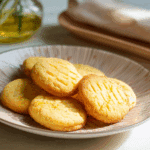
French Butter Cookies – 6 Delicious Twists You’ll Love
- Prep Time: 15 mins
- Cook Time: 12–15 mins
- Total Time: 30 mins
- Yield: 24 cookies
- Category: Dessert, Snack
- Method: Baking
- Cuisine: French
- Diet: Vegetarian
Description
French Butter Cookies are crisp, buttery, and melt-in-your-mouth treats with a delicate texture and rich flavor. Perfect for pairing with tea or coffee, these classic cookies are simple to make yet elegant enough for gifting or special occasions.
Ingredients
- 1 cup unsalted butter, softened
- 3/4 cup granulated sugar
- 1 large egg
- 1 tsp vanilla extract
- 2 cups all-purpose flour
- 1/4 tsp salt
- Optional: powdered sugar for dusting or chocolate drizzle
Instructions
- Preheat oven to 350°F (175°C) and line a baking sheet with parchment paper.
- In a large bowl, cream together softened butter and sugar until light and fluffy.
- Beat in the egg and vanilla extract until fully combined.
- Gradually add flour and salt, mixing until a smooth dough forms.
- Transfer dough to a piping bag fitted with a star tip and pipe cookies onto the prepared baking sheet, spacing them about 1 inch apart.
- Bake for 12–15 minutes, or until edges are lightly golden.
- Allow cookies to cool on the baking sheet for 5 minutes, then transfer to a wire rack to cool completely.
- Optional: dust with powdered sugar or drizzle with melted chocolate once cooled.
Notes
- For added flavor, you can mix in lemon or orange zest.
- Ensure butter is at room temperature for easy creaming.
- Cookies can be stored in an airtight container for up to a week.
Nutrition
- Serving Size: 1 cookie
- Calories: 110
- Sugar: 6g
- Sodium: 40mg
- Fat: 7g
- Saturated Fat: 4g
- Unsaturated Fat: 2g
- Trans Fat: 0g
- Carbohydrates: 11g
- Fiber: 0g
- Protein: 1g
- Cholesterol: 25mg
Essential Ingredients for Authentic French Butter Cookies
The magic of French Butter Cookies lies in their simplicity — a few high-quality ingredients come together to create something extraordinary. While the list might seem short, every element plays a crucial role in flavor, texture, and overall success. Choosing the right ingredients isn’t just about taste; it’s about honoring the tradition behind these cookies.
Choosing the Right Butter for the Best Flavor
Butter is the star of the show in French Butter Cookies. In fact, the very identity of the cookie depends on it. The buttery richness you taste in every bite comes from using high-quality, preferably European-style butter. These butters tend to have a higher fat content (82–85%) compared to standard supermarket butter (around 80%), which means less water and more pure, creamy flavor.
For the most authentic result, salted butter is traditionally used in French baking, particularly in regions like Brittany, where the addition of salt enhances the butter’s depth. The salt also acts as a natural flavor booster, cutting through the richness just enough to keep the cookies from feeling too heavy. If you opt for unsalted butter, you’ll need to add a pinch of fine sea salt to balance the taste.
Pro Tip: Keep your butter cold until just before you begin. Softening it too early can make the dough greasy and harder to manage. Ideally, the butter should be pliable but still cool to the touch.
The Role of Egg Yolks in Richness
Egg yolks are the secret to the luxurious texture of French Butter Cookies. They contribute richness, a tender crumb, and that subtle golden hue. The fat in the yolk blends with the butter to create a dough that bakes into a melt-in-your-mouth bite without crumbling apart too easily.
In our recipe, we use yolks both in the dough and as a glaze. When brushed over the cookies before baking, beaten yolk gives them that signature glossy finish and warm golden color. It’s a small detail that makes a big difference in presentation and flavor.
Baking Science: The lecithin in egg yolks acts as an emulsifier, ensuring the fat and liquid components blend smoothly. This prevents separation in the dough and results in a more uniform texture.
Using High-Quality Vanilla Extract
Vanilla might be subtle in flavor compared to butter, but its role is vital. A good vanilla extract deepens the flavor profile of French Butter Cookies, adding warmth and complexity. Avoid artificial vanilla flavoring, which can taste sharp and one-dimensional. Instead, choose pure vanilla extract or, for an even more luxurious touch, scrape seeds from a fresh vanilla bean.
The beauty of vanilla in this recipe is how it lingers in the background, allowing the butter to take center stage while still adding a gentle aromatic note that makes each bite more memorable.
All-Purpose Flour: The Right Structure
Flour provides the backbone of French Butter Cookies. All-purpose flour is ideal here — it has just enough protein to hold the cookie together without making it tough. Overmixing the dough after adding the flour can develop gluten, which will make the cookies dense and chewy instead of tender and crumbly.
Tip for Success: Sift your flour before adding it to the butter-sugar mixture. This not only removes any lumps but also aerates the flour, leading to a lighter final texture.
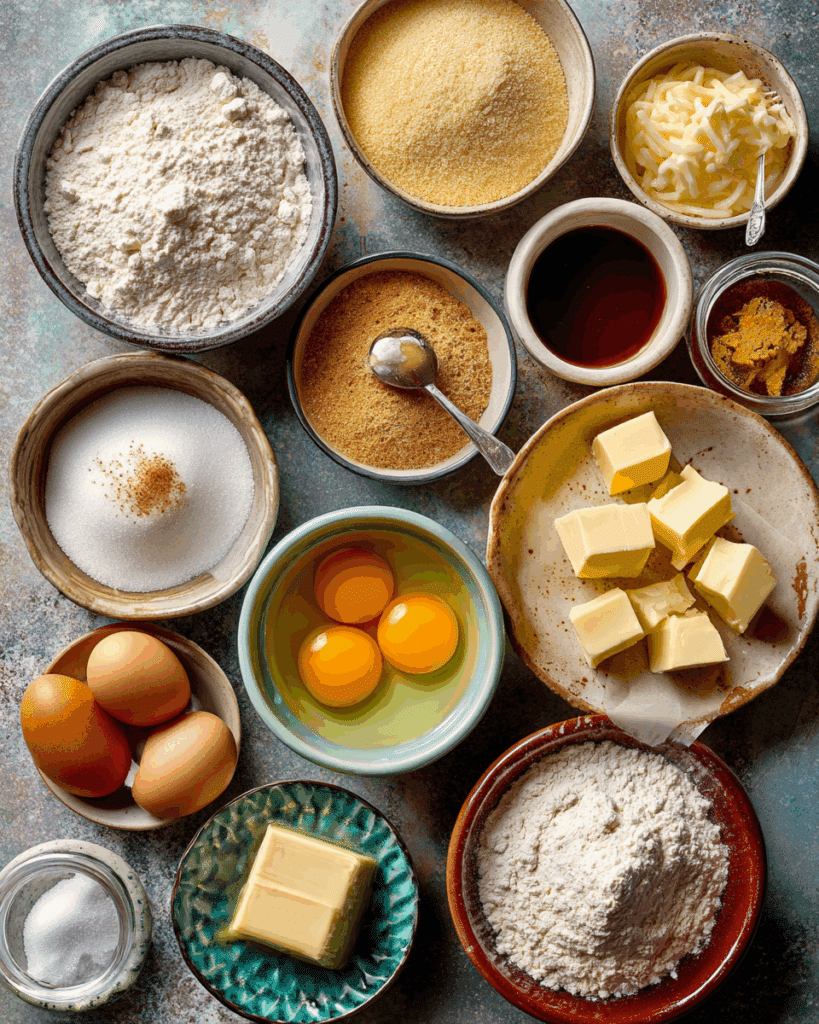
Step-by-Step French Butter Cookies Recipe
Baking French Butter Cookies isn’t complicated, but it does require attention to detail. Following each step with care ensures you get the signature tender crumb, golden color, and melt-in-your-mouth texture that make these cookies so beloved.
Preparation and Mixing the Dough
1. Preheat the Oven
Start by preheating your oven to 375°F (190°C). A properly heated oven is essential for even baking — cold starts can lead to undercooked centers or pale tops.
2. Line the Baking Sheet
Place parchment paper or a silicone baking mat on your baking sheet. This prevents sticking and promotes even browning on the bottom of the cookies.
3. Cream the Butter and Sugar
In a large mixing bowl, beat ½ cup + 5 tbsp salted butter and ½ cup + 1 tbsp granulated sugar together on medium speed until light and fluffy — about 1 minute. This step incorporates air into the mixture, which contributes to a lighter texture.
4. Add Egg Yolks and Vanilla
Mix in 2 egg yolks and 1 teaspoon of vanilla extract until just combined. Stop and scrape down the sides of the bowl to ensure even mixing.
5. Incorporate the Flour
Add 2 cups + 2 tbsp all-purpose flour on low speed, mixing just until the dough begins to clump. Avoid overmixing — we want the dough tender, not tough.
Rolling, Cutting, and Shaping
- Lightly flour your work surface to prevent sticking.
- Gather the dough into a ball and place it on the floured surface.
- Sprinkle a little flour over the top of the dough and roll it out to about ¼ inch thick.
- Use a medium round cookie cutter (2.25 inches / 5.75 cm) to cut out shapes.
- Transfer each round to the prepared baking sheet using a sharp-edged spatula to maintain the shape.
If you loved the delicate crumb of French Butter Cookies, you’ll adore the tender, sponge-like texture of classic French Yogurt Cake Recipe
The Art of the Cross-Hatch Pattern
This detail isn’t just decorative — it’s traditional.
- Beat the remaining egg yolk in a small bowl.
- Use a fork to create a cross-hatch: drag the tines vertically across the cookie, then horizontally.
- Brush the tops lightly with the beaten yolk for that golden sheen.
The cross-hatch not only adds visual charm but also creates tiny ridges that catch light and give each cookie a bakery-perfect look.
Baking to Golden Perfection
Bake the cookies for 12 to 15 minutes, keeping a close eye toward the end. They should be a deep golden color around the edges but not overbrowned. If you’re baking multiple trays, rotate them halfway through for even cooking.

Cooling and Storing for Freshness
After baking, transfer the cookies to a wire rack and let them cool completely. This step helps set their structure and ensures they keep their crisp edges.
For storage:
- Keep in an airtight container at room temperature for up to 5 days.
- For longer storage, freeze in a sealed container with parchment between layers — they’ll keep for up to 3 months without losing flavor.
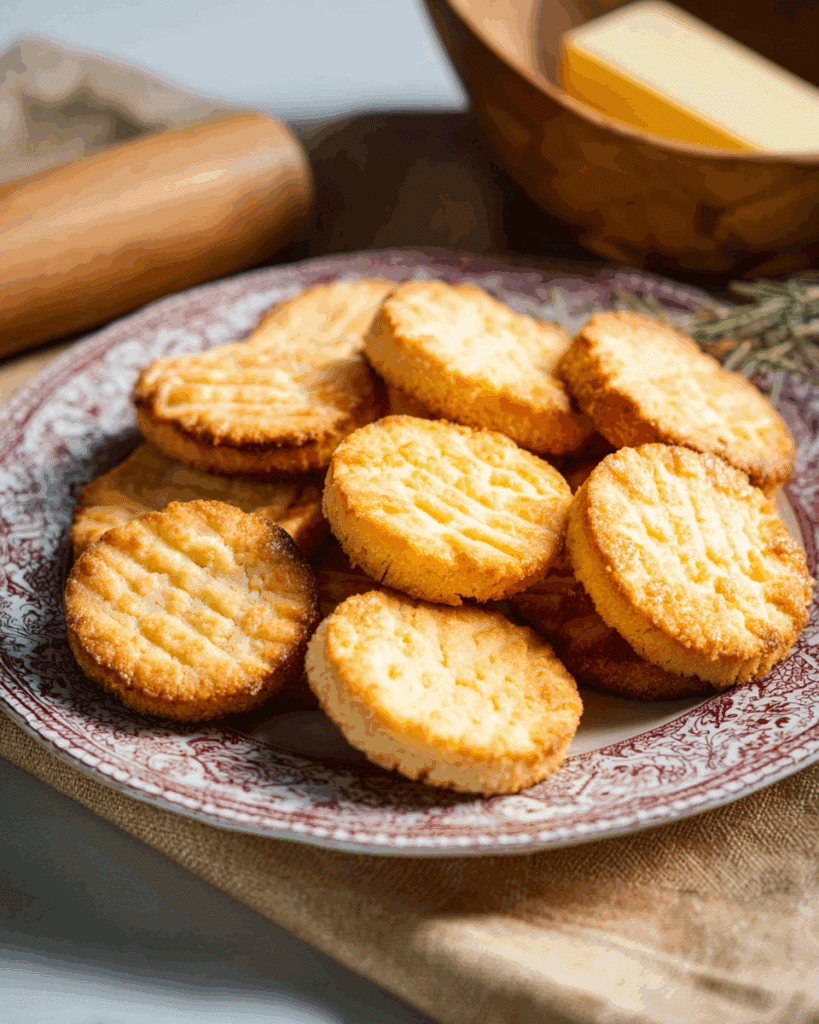
Pro Tips for Perfect French Butter Cookies Every Time
Even though French Butter Cookies are simple in ingredients, there’s a fine art to making them exceptional. Small adjustments in technique can transform a good cookie into a spectacular one. Here are our tried-and-true tips:
Avoiding Common Mistakes
1. Overmixing the Dough
Once the flour is added, mix just until the dough comes together. Overmixing develops gluten, which leads to a tougher, chewier cookie instead of the delicate crumble we’re after.
2. Using Butter That’s Too Soft
Room temperature butter should be pliable, not greasy. If it’s too soft, the dough will spread more than it should, and you’ll lose the clean cookie shape.
3. Skipping the Chill
If your dough feels sticky, give it a quick 15-minute chill in the fridge before rolling. This makes it easier to handle and helps the cookies maintain their form during baking.
4. Overbaking
These cookies should be golden — not brown. Even a minute too long in the oven can shift the flavor from buttery-sweet to slightly bitter.
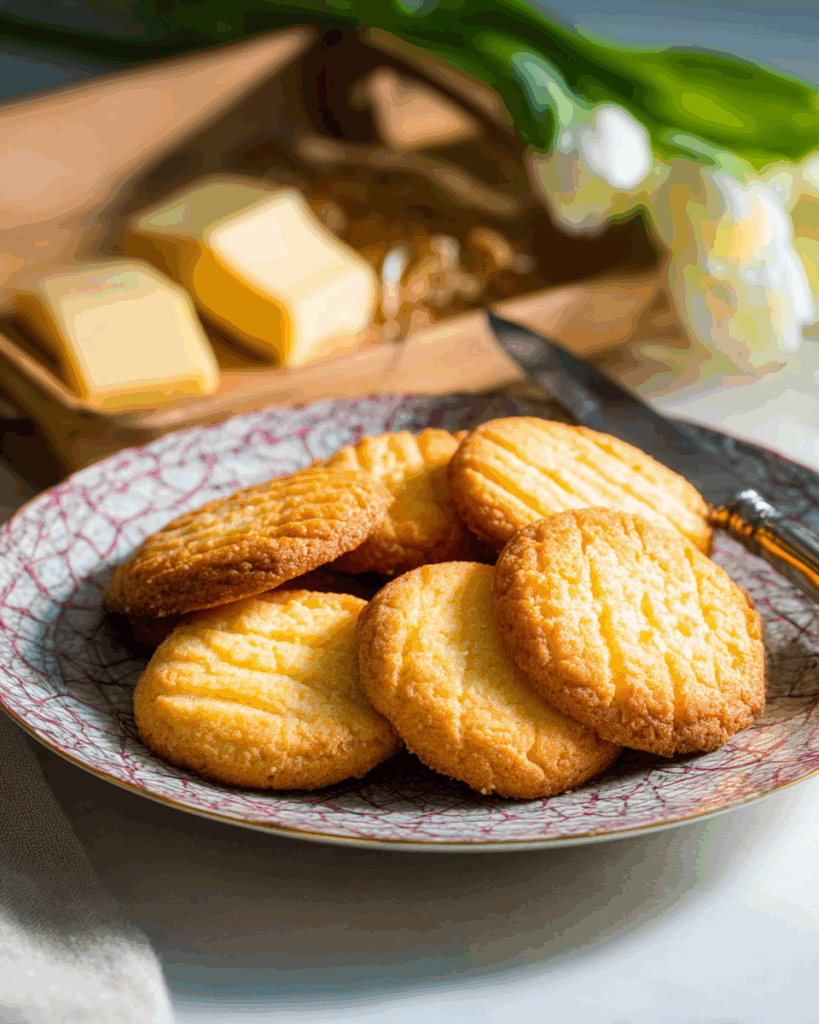
Conclusion: Why French Butter Cookies Deserve a Spot in Your Recipe Book
French Butter Cookies are the perfect example of how simple ingredients can create something timeless, elegant, and irresistibly delicious. They’re more than just a recipe — they’re a tradition, a connection to the past, and a treat that’s just as welcome at a fancy afternoon tea as it is at a casual coffee break.
From the buttery aroma that fills your kitchen to the golden sheen of the finished cookies, every step in making French Butter Cookies is rewarding. Whether you bake them exactly as tradition dictates or give them a personal twist, they’ll always deliver comfort and joy in every bite.
Frequently Asked Questions About French Butter Cookies
Can I use unsalted butter instead of salted butter?
Yes, you can make French Butter Cookies with unsalted butter. Just add a pinch of fine sea salt to the dough to balance the flavor and achieve that classic taste.
How do I keep my French Butter Cookies from spreading too much?
Make sure your butter is cool and pliable, not overly soft, before creaming with sugar. If your dough feels too warm, chill it for 15 minutes before rolling and cutting your French Butter Cookies.
Can I prepare the dough ahead of time?
Absolutely. You can refrigerate the dough for up to 24 hours before baking. This rest time can even enhance the flavor of your French Butter Cookies.
Are French Butter Cookies the same as shortbread?
Not exactly. While similar, shortbread is typically denser and doesn’t include egg yolks. French Butter Cookies are slightly lighter in texture and richer due to the yolks.
How long do French Butter Cookies stay fresh?
Stored in an airtight container at room temperature, French Butter Cookies will stay fresh for up to 5 days. For longer storage, freezing is the best option.
Can I make gluten-free French Butter Cookies?
Yes, you can substitute the all-purpose flour with a high-quality gluten-free baking blend. Just ensure it’s a 1:1 replacement to keep the texture of your French Butter Cookies close to the original.

